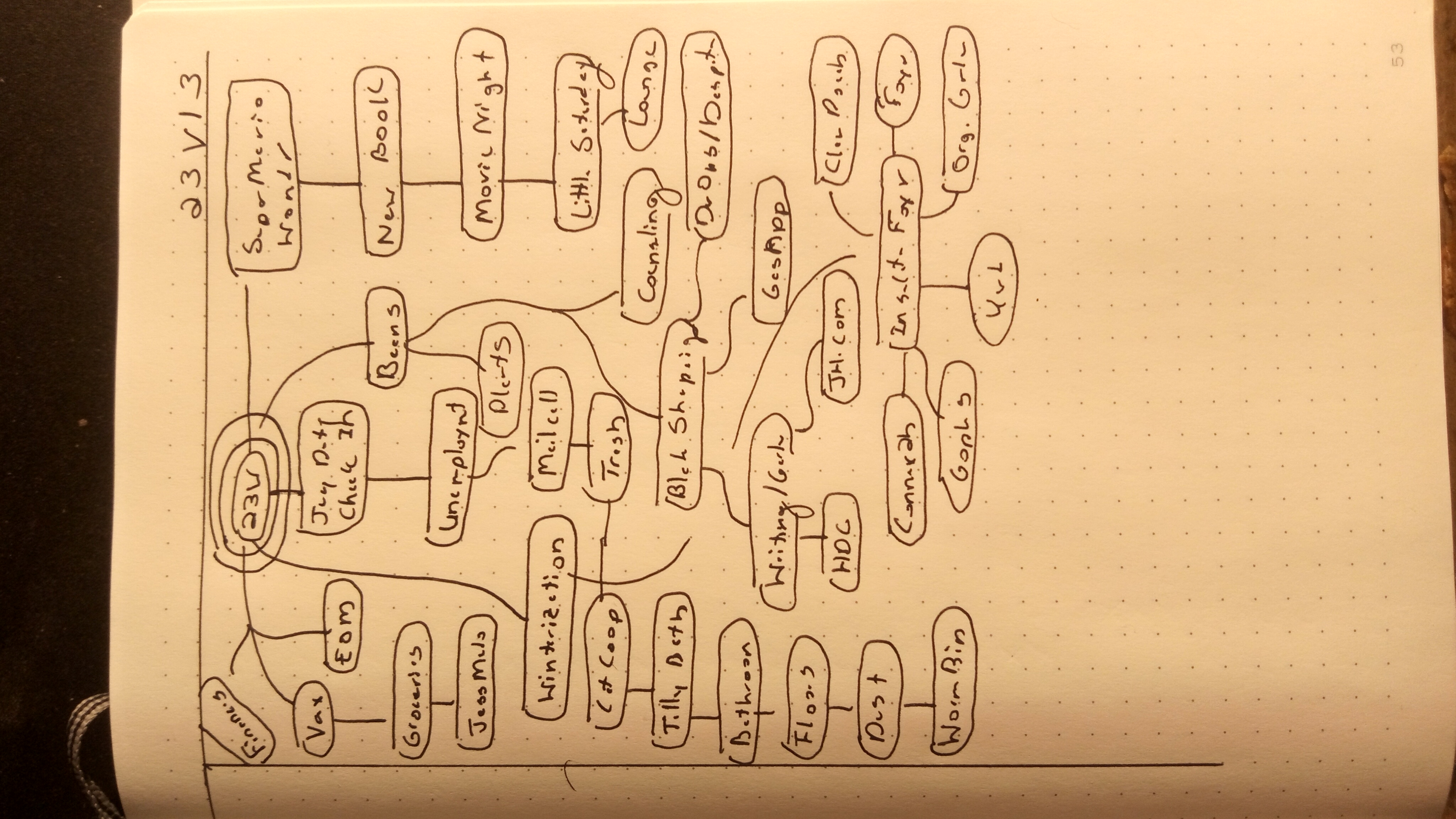Mind Mapping
I was first introduced to the idea of Mind Mapping in Vermeer's [[8760 Hours]]. The process is very simple:
- Start with a central idea in the middle of a blank sheet
- Start just freeform thinking about that idea
- As related concepts appear in your head, jot them down on the sheet of paper and draw a line connecting them to the central idea
- Reflect on the related concept, add more concepts related to it on the sheet and connect them to the new concept
- Continue repeating, adding additional concepts, connecting them, and if exhausted on one node, work back up towards the central node until there is nothing more to write out.
Example Mind Map from a [[Fortnight]] planning session trying to get everything down I needed to do in a recent week.
Upsides
- This is a really good process for when you are feeling totally overwhelmed or are starting a project. Just mind map out everything that you can think of needing to do on the project. Don't even worry about the problem of "where to start," as you can reflect on that after the mind map is done.
- Combine Mind Mapping with [[GTD]] as a process to really get all your ideas out that need to be added to your lists.
Downsides
- I've rarely saved a mind map. Once used. Ball it up and toss it out.
- There are no real good digital tools for mind maps. I've used the Mermaid Live Editor1 for mind maps to add to the digital garden, but I largely find that [[Paper Based Planning]] is the best process for really freeform brainstorming.
External References
- Mermaid Live Editor <https://mermaid.live/>. Retrieved 23W07.
Linked References
- 8760-hours
- 8760 Hours introduced me to the idea of [[Mind Mapping]]
- brag-sheet
The brag sheet is roughly 5-10 pages by the end of the year and updated on a quarterly basis. It includes narrative, diagrams, [[mind mapping]] and lists as a complete report to highlight my achievements over the course of the year.
- knowledge-management
- If an article is worth knowing, take the time to read it thoroughly and completely using [[Mind Mapping]] techniques to deconstruct it into an alternative visual medium.
- paper-based-planning
I have slowly built out a system of note taking and planning that emphasizes the usage of writing on physical paper with pen and ink in [[bullet journals]], [[logbook]], and [[mind maps]]. This process, I believe asists in my productivity in three ways:
- paper-based-planning
- Note taking with physical media allows for free-form exploration of the material, e.g. [[mind mapping]].
- personal-productivity-practices
- review-quarterly
- Review and [[mind map]] the last six or seven [[fortnight retrospective]] noting what projects and activities occurred in the major [[areas]] of my life.
- software-engineering-lab-notebook
If old notes or additional tasks are rendered irrelevant, then I can strike through these tasks to remove them. If a note references an external source, I should note the title, author and year of publication for that source. Additional notes may also incorporate [[mind maps]] and UML diagrams.
